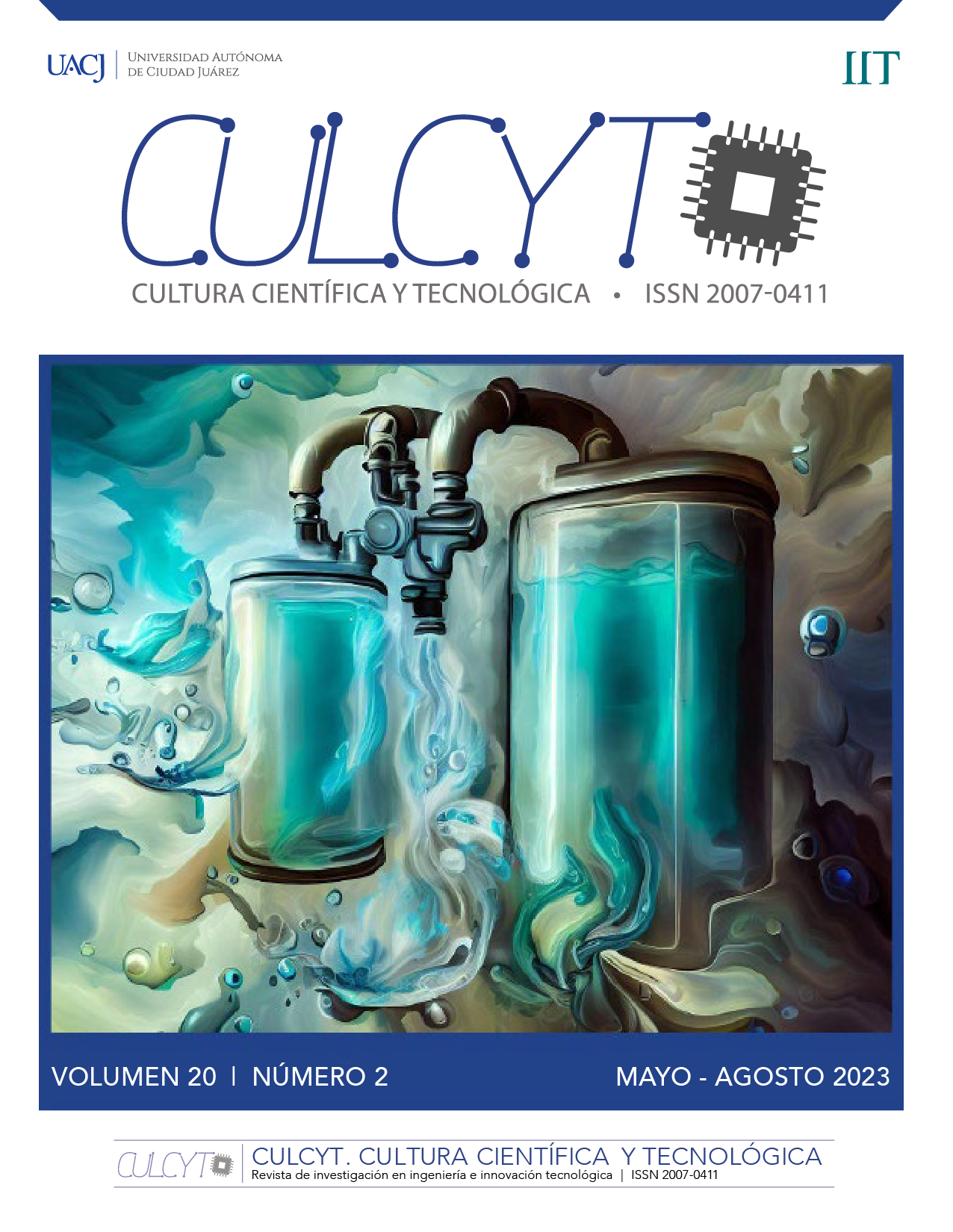Simulator design that identifies key variables and their impact on chayote production
DOI:
https://doi.org/10.20983/culcyt.2023.2.2e.6Keywords:
agroindustria, dinámica de sistemas, pronósticos, cadena de suministro, chayoteAbstract
This article is a case study developed in an agro-industrial company that produces chayote, where a forecast simulation model that serves as support to estimate the yield of the orchards as well as their decline is developed. The model also helps to evaluate the customer satisfaction degree due to the delivery of their orders. Key variables of the chayote supply chain were analyzed, such as: weather conditions, losses, planted area, average yield per hectare, export rates and contracts entered into with customers. In this way, the company will be able to take timely supply measures and consider other producers to be its suppliers, fulfill customer orders and thus increase its satisfaction percentage. For the model development, the System Dynamics methodology was used. The company validated the model and subsequently it was given a graphical interface that allows the manipulation of certain variables to understand how they affect the chayote production process through a series of key performance indicators.
Downloads
References
SIAP. “Chayote, hortaliza que pertenece a la familia de las calabazas contribuye a la salud”. Gob.mx. https://www.gob.mx/siap/articulos/chayote-hortaliza-que-pertenece-a-la-familia-de-las-calabazas-contribuye-a-la-salud (accedido en: ag. 15, 2022).
H. Avendaño, J. Cadena, M. L. C. Arévalo, E. Campos, V. M. Cisneros y J. F. Aguirre, Las variedades del chayote mexicano, recurso ancestral con potencial de comercialización, 1.a ed. México: GISeM, 2010, pp. 88. [En línea]. Disponible en: https://www.gob.mx/cms/uploads/attachment/file/231856/Las_variedades_del_chayote_mexicano.pdf
J. Nataren-Velazquez, A. L. Del Angel-Pérez, J. Valente Megchún-García, E. Ramirez-Herrera, C. A. Hernandez-Estrada, I Meneses-Marquez, “Caracterización del cultivo de chayote (Sechium edule Jacq) (Swartz) en la zona de Altas Montañas del estado de Veracruz”, RINDERESU, vol. 5, no. 1, pp. 134-152, sept., 2020. [En línea]. Disponible en: http://rinderesu.com/index.php/rinderesu/article/view/52/56.
L. R. Izquierdo, J. M. Galán, J. I. Santos y R. Del Olmo, “Modelado de sistemas complejos mediante simulación basada en agentes y mediante dinámica de sistemas”, EMPIRIA, no. 16, pp. 85-112, 2008. [En línea]. Disponible en: https://www.redalyc.org/pdf/2971/297124024004.pdf.
S. A. David, D. D. Quintino, C. M. C. Inacio Jr. y J. A. T. Machado, “Fractional dynamic behavior in ethanol prices series”, J. Comput. Appl. Math., vol. 339, 2018, pp. 85-93, doi: 10.1016/j.cam.2018.01.007.
M. V. Turdera, “Energy balance, forecasting of bioelectricity generation and greenhouse gas emission balance in the ethanol production at sugarcane mills in the state of Mato Grosso do Sul”, Renew. Sust. Energ. Rev., vol. 19, 2013, pp. 582-588, doi: 10.1016/j.rser.2012.11.055.
L. G. Tapia, “The effects of oil price volatility on ethanol, gasoline, and sugar price forecasts”, Energy, vol. 181, 2019, pp. 1012-1022, doi: 10.1016/j.energy.2019.05.067.
A. Sanchez y D. Gomez, “Analysis of historical total production costs of cellulosic ethanol and forecasting for the 2020-decade”, Fuel, vol. 130, 2014, pp. 100-104, doi: 10.1016/j.fuel.2014.04.037.
D. C. Tascón y O. Díaz, “Air traffic forecast and its impact on runway capacity. A System Dynamics approach”, J. Air Transp. Manag., vol. 90, p. 101946, 2021, doi: 10.1016/j.jairtraman.2020.101946.
Y. He, J. Jiao, Q. Chen, S. Ge, Y. Chang y Y. Xu, “Urban long term electricity demand forecast method based on system dynamics of the new economic normal: The case of Tianjin”, Energy, vol. 133, 2017, pp. 9-22, doi: 10.1016/j.energy.2017.05.107.
W. Wang, K. Li, Y. Liu, J. Lian y S. Hong, “A system dynamics model analysis for policy impacts on green agriculture development: A case of the Sichuan Tibetan Area”, J. Clean. Prod., vol. 371, 2022, doi: 10.1016/j.jclepro.2022.133562.
W. Zhou, A. Moncaster, E. O’Neill, D. M. Reiner, X. Wang, P. Guthrie, “Modelling future trends of annual embodied energy of urban residential building stock in China”, Energy Policy, vol. 165, 2022, doi: 10.1016/j.enpol.2022.112932.
POWER | Data Access Viewer, National Aeronautics and Space Administration, ag. 16, 2022. [En línea]. Disponible en: https://power.larc.nasa.gov/data-access-viewer/
Downloads
Published
How to Cite
Issue
Section
License
Copyright (c) 2023 Héctor Daniel García Castro, Cuauhtémoc Sánchez Ramírez, Magno Ángel González Huerta

This work is licensed under a Creative Commons Attribution-NonCommercial 4.0 International License.
Todos los contenidos de CULCYT se distribuyen bajo una licencia de uso y distribución “Creative Commons Reconocimiento-No Comercial 4.0 Internacional” (CC-BY-NC). Puede consultar desde aquí la versión informativa de la licencia.
Los autores/as que soliciten publicar en esta revista, aceptan los términos siguientes: a) los/las autores/as conservarán sus derechos de autor y garantizarán a la revista el derecho de primera publicación de su obra; y b) se permite y recomienda a los/las autores/as agregar enlaces de sus artículos en CULCYT en la página web de su institución o en la personal, debido a que ello puede generar intercambios interesantes y aumentar las citas de su obra publicada.



